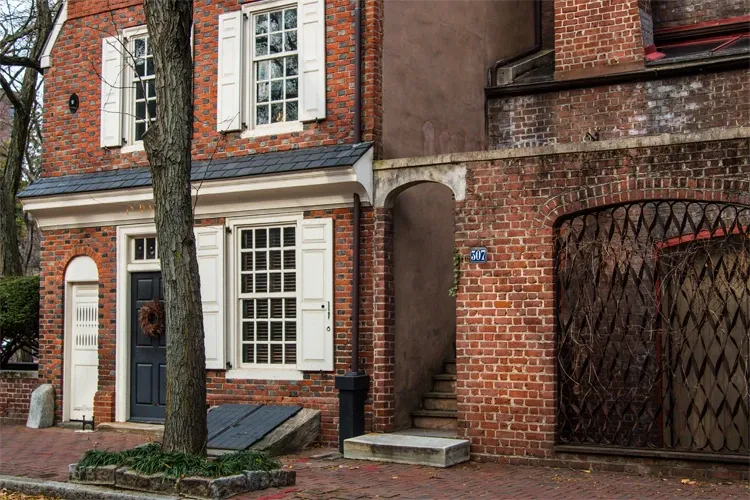There’s a superstition that haunts discussions about real estate development in cities nationwide.
Whenever the topic of flipping houses or revitalizing neighborhoods arises, someone will inevitably lament that these things cause gentrification, bringing a pallor of guilt and hand-wringing to the conversation.
To the urban higher education-focused chattering classes, gentrification is the notion that when whiter, wealthier people move into poorer, majority-black neighborhoods to flip houses and start new businesses, it causes the local cost of living to skyrocket. The original residents, whose budgets cannot handle the increase, are purportedly forced to seek housing elsewhere, perhaps relocating to even poorer neighborhoods and becoming poorer than they had been.
This theory that revitalizing a neighborhood causes displacement comes from the writings of Ruth Glass, the British sociologist who coined the term “gentrification.” In the early 1960s, Glass noticed that a pack of middle-class, university-educated people were buying up tattered cottages in her working-class London neighborhood of Islington and renovating them into charming, fashionable family homes. Glass speculated that this process would continue until all the original working-class residents are replaced, changing the character of the neighborhood entirely.
Whenever the topic of flipping houses or revitalizing neighborhoods arises, someone will inevitably lament that these things cause gentrification, bringing a pallor of guilt and hand-wringing to the conversation.
Glass’s theory fit so neatly into the progressive worldview that it morphed into an endemic item of faith in universities and went empirically untested for decades.
Recent inquiry has called Glass’s ideas into question. Researchers from the University of Chicago and the Philadelphia Federal Reserve Bank used longitudinal data to assess neighborhood change in the 100 most populous US metropolitan areas. By comparing gentrifying and non-gentrifying neighborhoods, the researchers discovered evidence that contradicted the conventional wisdom about gentrification.
The neighborhoods that gentrified saw barely any increase in outmigration when compared to non-gentrifying neighborhoods. The poorer residents who moved out of a gentrifying neighborhood did not move to a neighborhood poorer than the one they left and were not made worse off socioeconomically. Gentrifying neighborhoods became more diverse in terms of both race and income, rather than becoming homogeneously white or affluent. Poor residents who stayed in gentrifying neighborhoods did not see their monthly rent increase any more than poor residents of non-gentrifying neighborhoods.
Researchers from the University of Chicago and the Philadelphia Federal Reserve Bank used longitudinal data to assess neighborhood change in the 100 most populous US metropolitan areas. By comparing gentrifying and non-gentrifying neighborhoods, the researchers discovered evidence that contradicted the conventional wisdom about gentrification.
The problem with rundown neighborhoods is more the lack of people who occupy them rather than the type of people. Poor neighborhoods that did not gentrify declined in population and average income, whereas gentrifying neighborhoods increased in both. Gentrification tended to bring new residents, housing, and businesses to fill in the vacant spaces in a neighborhood, largely without displacing the existing housing and residents.
The results of this study align with my own observations as a resident of Nashville. Before I was married, I lived with roommates in rental houses in three different gentrifying neighborhoods. When I moved into each of these neighborhoods, their former decline was evident. Vacant houses, shuttered storefronts, and abandoned warehouses lined the streets. I watched as new life came to restore and occupy these spaces.
Given that the former blight was a sad sight for anyone, and knowing that most people of any race prefer clean, orderly places to live, work, and play, is there any better solution for urban decay than for new effort and enterprise to come reverse it?
The problem with rundown neighborhoods is more the lack of people who occupy them rather than the type of people.
I also saw several of my black neighbors and landlords sell their properties at sky-high prices, a benefit of the increase in property values gentrification brings. Many Americans never have the opportunity to sell their home for a quarter million dollars of profit, let alone poor, urban homeowners. Why these homeowners should not cash the check of a lifetime is a question that has gone unanswered by anti-gentrification progressives.
Sociologists agree that some of the worst ills of urban poverty are due to its concentration. When most residents of a neighborhood are poor, opportunities to climb out of poverty are scarce. Adding wealthier people will not make poverty disappear, but it can blunt the effects of its concentration by increasing opportunities for employment, connections, and access to resources.
Ruth Glass’s London neighborhood where she originated the negative concept of “gentrification” has ultimately proved her wrong. Present-day Islington is packed with diverse housing and residents. Government-subsidized flats are within walking distance of million-dollar townhouses, and there are shops, pubs, and restaurants for any budget.
Pleasant, well-kempt, productive spaces don’t appear out of nowhere; they take effort to create and maintain. Dilapidated American inner cities desperately need the energy and investment of whoever can afford to provide them. Knee-jerk grumbles about gentrification are unlikely to help.



